Agroha (Hisar): As the sun beat down on the excavation site at Haryana’s ancient Agroha mound, a team of archaeologists digging for the last two months were beginning to lose hope. But brushes and trowels put to a disciplined use rarely disappoint.
“Wait, what’s this?” one of the team members exclaimed, his voice trembling with excitement as the team realised it had uncovered something remarkable.
“We brushed away the dirt, and there emerged a massive platform with a brick wall. We all were excited to see the wall structure and how it continues under the soil,” said Arakhita Pradhan, archaeologist and co-director of Agroha excavation.
The excavation by the Archaeological Survey of India started on 12 March and ended on 31 May. ASI Chandigarh Circle superintending archaeologist KA Kabui was the director of the excavation.
The brick wall was surrounded by debris accumulated over many centuries. For nearly two months, Pradhan’s team found nothing except a few sling balls, terracotta figurines, and beads. But toward the end of the excavation, the team’s excitement turned to euphoria.
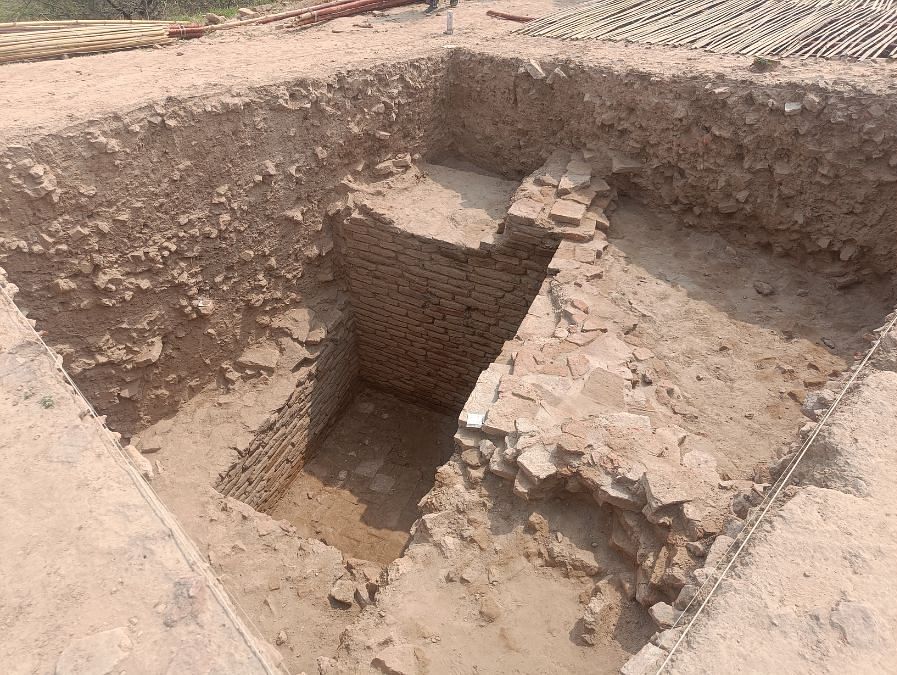
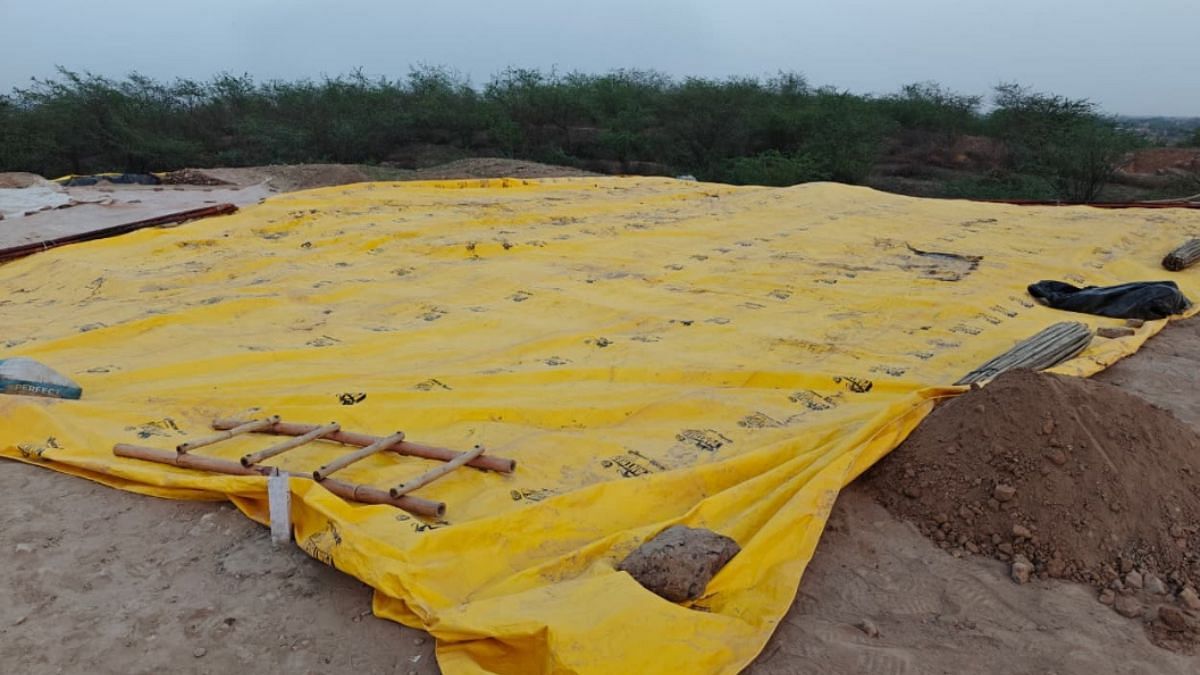
The Agroha mound is spread over 125 acres in the Hisar district. Thought to have been the capital of Maharaja Agrasen, a revered figure among the Vaish community across North India, Agroha piqued ASI’s interest after 44 years. The site is now on the radar of the Haryana government and ASI—to develop a tourism circuit that would include Rakhigarhi, Banawali, Bhirrana, Kurukshetra, Hansi, and Kunal. A year ago, ASI and the Haryana archaeology and museum department signed a memorandum of understanding to develop Agroha into a prominent heritage site. The recent excavation drive is part of the effort to examine the cultural sequence of Agroha and trace the history of Maharaja Agrasen.
“Our aim is to hit the natural soil, but we have not yet reached it. Our excavation mandate is to check the cultural sequence, know the town planning and the settlement pattern in different eras,” said Pradhan. Agroha has a rich history and was home to a fortified settlement, he added.
According to the ASI findings, Agroha remained an important centre of commerce and political activities till the period of Firoz Shah Tughlaq in the 14th century. This is because the city was situated on the ancient trade route between Taxila and Mathura.
“Traditionally, the site of Agroha is associated with legendary king Maharaja Agrasen and believed to represent the site of Agreya republic referred to in the Mahabharata. It also finds mention in the Ashtadhyayi of Panini. Agroha appears to have been mentioned by Ptolemy, who calls it ‘Agara’,” read the entry on the Agroha mound on the ASI website.
A long history
Over the excavation site at Agroha, a person stood poised, pencil in hand, capturing the essence of the ancient ruins, blending art and archaeology. With meticulous detail, he sketched the trenches, granular details of the site, and structural remains, preserving a moment in time before the excavation was complete.
The ASI team selected eight squares, each measuring 10 square feet. In the initial days, 15 trainees, all of them from the Deen Dayal Upadhyay Institute of Archaeology, were made to remove debris using trowels, sieves, and brushes under the supervision of Pradhan. The students spent 45 days at the excavation site and unearthed many sculptures, terracotta artefacts, structural remains, ceramics, and beads. More than 50 labourers were engaged in digging the site.
The Agroha mound was declared a protected site of national importance in 1926. Archaeological excavation revealed a fortified township and continuous habitation from around the 4th century BCE to the 14th century CE.
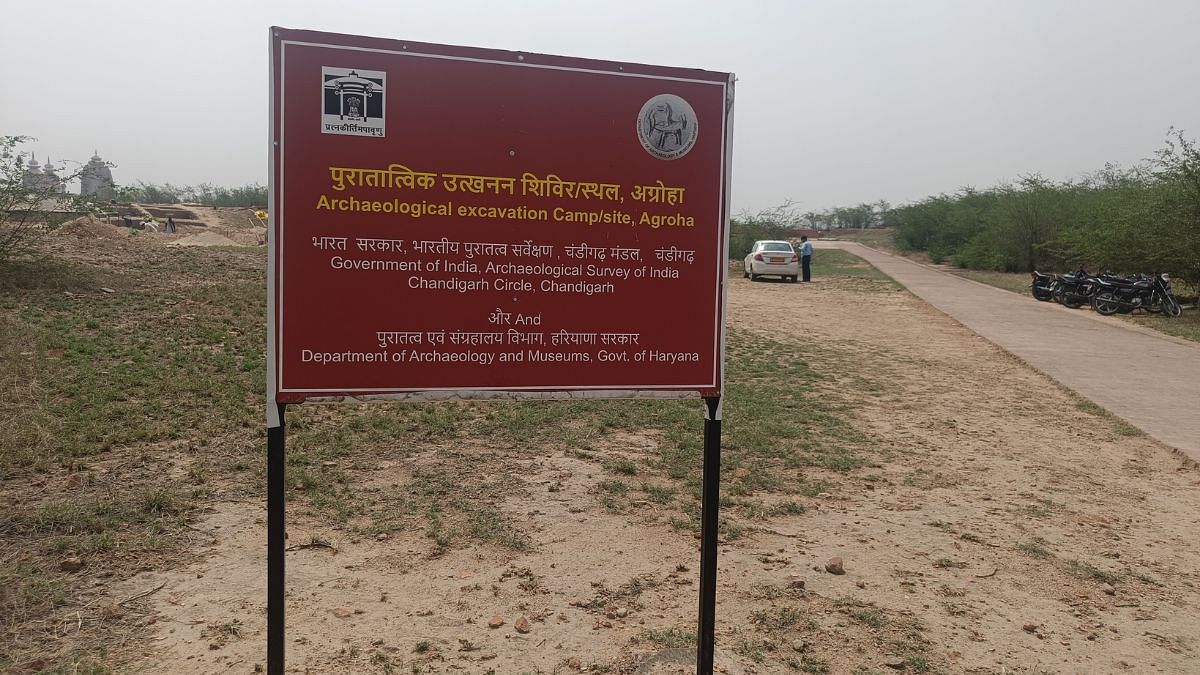
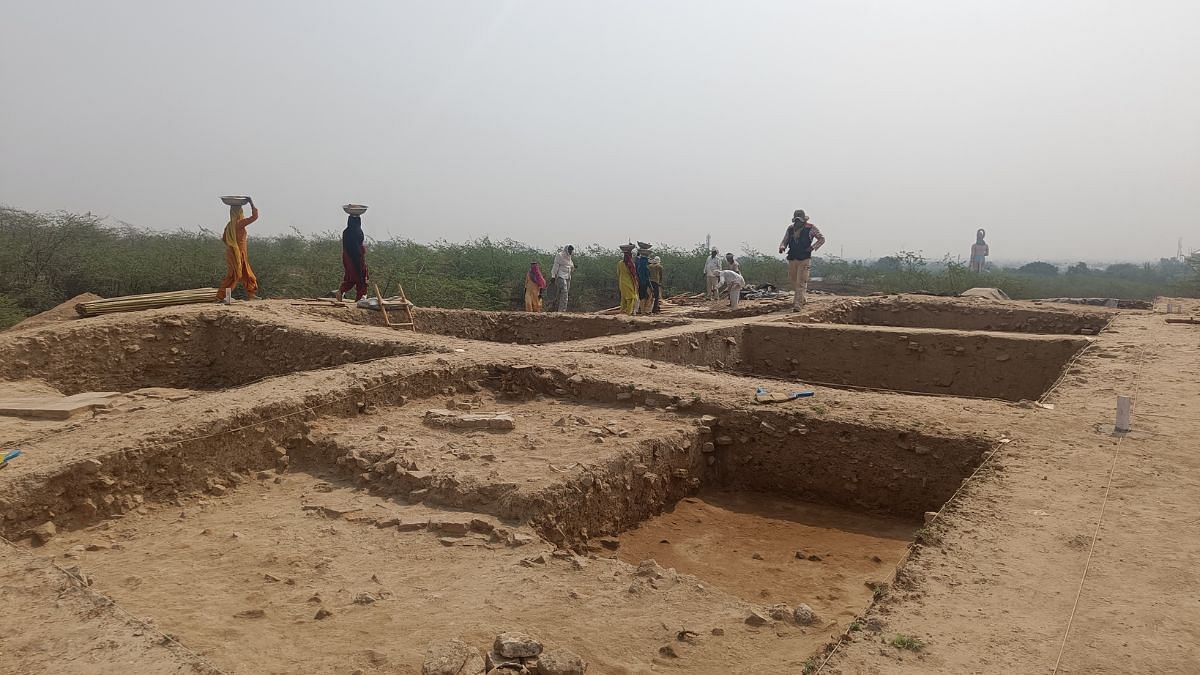
“This site shows that it has a long history of habitation, which makes it interesting,” Pradhan said, adding that the mound is situated at a high altitude, suggesting the settlement here could have been from much earlier. However, in recent excavations, they have only structures from the Gurjar-Pratihar period, which was between the 8th and 11th centuries CE.
A renewed interest in the site was shown in August 2023, when then CM Manohar Lal Khattar spoke with Union culture minister G Kishan Reddy about fresh excavations and building infrastructure at the protected site. In March 2024, a Ground Penetrating Radar (GPR) survey was launched. A team from IIT Kanpur did the survey, following which the digging work began in March this year.
The site was first excavated by CJ Rodgers in 1888-89 and re-excavated by archaeologist HL Srivastava in 1938-39, when a hoard of silver coins, including four Indo-Greek, one punch-marked, and another 51 coins of Agrodaka were reported.
In the late 1970s, ASI excavated the site for three consecutive years from 1978-79 to 1980-81, and found evidence of five cultural periods spanning 10 centuries. During the 1978 extensive excavation by JS Khatri, the archaeology department found a Buddhist stupa and a Hindu temple.
“Apart from the residential and community houses, made of baked and unbaked bricks, the excavations have also revealed the remains of a Buddhist stupa and a Hindu temple,” read the ASI Chandigarh Circle webpage.
Also read: Gujarat is the hub of India’s potato revolution. Feeding the world frozen fries
Development plan
The Agarwal community across India traces their lineage to Maharaja Agrasen. It is believed that the king was born during the era of the Mahabharata.
“According to Bharatendu Harishchandra’s account, Maharaja Agrasen was a Suryavanshi Kshatriya king, born during the last stages of Dwapar Yuga in the Mahabharata epic era, he was contemporaneous to Lord Krishna,” reads the Maharaja Agrasen Medical College website.
In March this year, union home minister Amit Shah unveiled a grand statue of Maharaja Agrasen in Hissar. “Maharaja Agrasen was a unique kind of ruler… [He] worked to nurture the values of the entire state,” said Shah.
In 2023, the Manoharlal Khattar-led state government announced the development of Agroha on the lines of Rakhigarhi, which hosts a site museum. The Haryana government and ASI are both investing in the project.
“The site’s development will not only establish it as a revered centre of faith but it will also gain recognition as a prominent tourist destination,” Khattar had said.
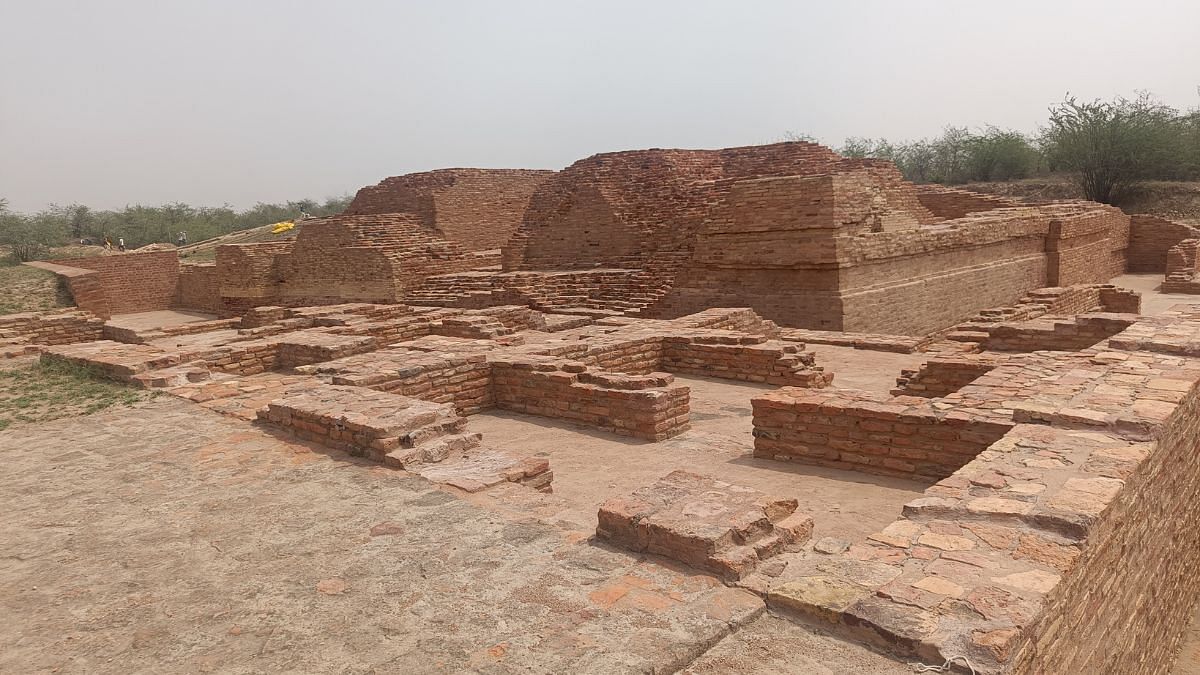
According to the Agroha development plan, the state government plans to develop a tourist welcoming centre, a site museum, a planetarium, and a knowledge park to educate visitors about its historical significance. The Haryana government has allotted the land for a site museum near the protected Agroha mound.
ASI is eager to go back and find more evidence from the site, but rising temperatures pose a challenge.
“That’s why we have stopped the excavation for now. In October, we will start digging again and go deep to see the continuity of the wall. The site needs more excavation to reveal its exact history,” Pradhan said.
(Edited by Prasanna Bachchhav)






